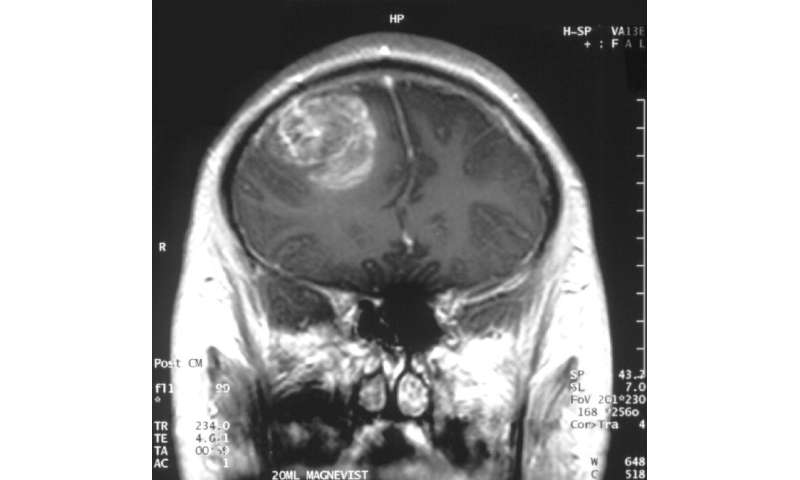Researchers find a new promising therapeutic target for glioblastoma

Glioblastoma is the most frequent and aggressive brain cancer due to its ability to escape the immune system. However, the way in which this tumor manages to induce this immune tolerance was not known in detail. A research published in PNAS carried out at the Instituto de Neurociencias UMH-CSIC, in Alicante (Spain), and the IMIB-Arrixaca in Murcia (Spain), has find out in detail how this tumor invade healthy tissue with hardly any resistance, a finding that could become glioblastoma’s Achilles heel.
The team led by Dr. Salvador Martínez, director of the UMH-CSIC Institute of Neurosciences in Alicante (Spain), and Dr. Rut Valdor, of IMIB-Arrixaca in Murcia (Spain), has shown how glioblastoma hijacks the contractile cells that surround the blood vessels of the brain and are also part of the barrier that protects it. The objective is to deactivate the antitumoral function of that these cells, called pericytes, and force them to work on the expansion of the tumor.
This change in the function of the pericytes, which are no longer defending cells to become “enemies,” is achieved by glioblastomas by altering one of the cellular “cleaning services”: chaperone mediated autophagy. Through autophagy the cell breaks down and destroys damaged or abnormal proteins. And chaperones are proteins that actively work on this task. The alteration by the glioblastoma of this cleaning service changes the proinflammatory defense function of the pericytes by another immunosuppressive, which favors the survival of the tumor.
Inactivating the tumor
Researchers have been able to verify in a mouse model that blocking this anomalous autophagy hinders the development of the tumor, causing defective adhesion of glioblastoma to the pericyte and, with it, the death of cancer cells, so it becomes a promising therapeutic goal.
“This work reveals a previously unknown capacity of glioblastoma to modulate chaperone mediated autophagy (AMC) in pericytes, and thus promote tumor progression. Our results point to the AMC as a promising therapeutic goal to treat this aggressive brain cancer so far without cure,” says Dr. Martínez.
Previous this group showed that the influence of glioblastoma on the pericyte prevents destructive T-lymphocytes from attacking the tumor. “That is why the brain does not detect glioblastoma and cannot react against it,” explains Salvador Martínez, director of the Experimental Neurobiology group at the Instituto of Neurociencias UMH-CSIC in Alicante.
This new finding narrows the fence against this aggressive brain tumor and is in line with the current hypothesis about the role of autophagy in suppressing the early stages of tumor development and how alterations in this process contribute to its progression.
Source: Read Full Article